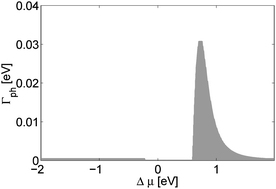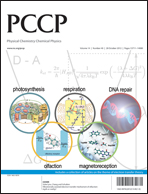Vibrational cooling, heating, and instability in molecular conducting junctions: full counting statistics analysis
Abstract
We study current-induced vibrational cooling, heating, and instability in a donor–acceptor rectifying molecular junction using a full counting statistics approach. In our model, electron–hole pair excitations are coupled to a given molecular vibrational mode which is either harmonic or highly anharmonic. This mode may be further coupled to a dissipative thermal environment. Adopting a master equation approach, we confirm the charge and heat exchange fluctuation theorem in the steady-state limit, for both harmonic and anharmonic models. Using simple analytical expressions, we calculate the charge current and several measures for the mode effective temperature. At low bias, we observe the effect of bias-induced cooling of the vibrational mode. At higher bias, the mode effective temperature is higher than the environmental temperature, yet the junction is stable. Beyond that, once the vibrational mode (bias-induced) excitation rate overcomes its relaxation rate, instability occurs. We identify regimes of instability as a function of voltage bias and coupling to an additional phononic thermal bath. Interestingly, we observe a reentrant behavior where an unstable junction can properly behave at a high enough bias. The mechanism for this behavior is discussed.

- This article is part of the themed collection: Electron Transfer Theory

 Please wait while we load your content...
Please wait while we load your content...